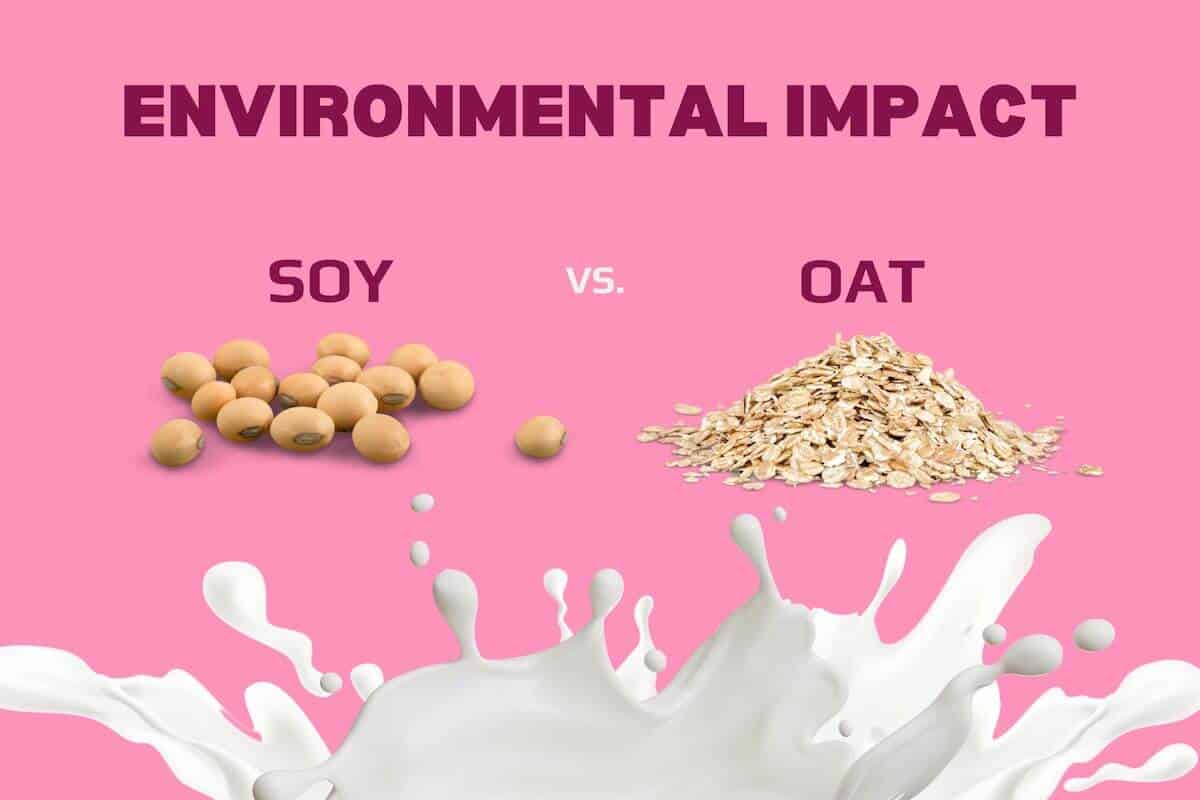If you are consuming a more plant-based diet, you’ve likely tried different plant-based milks. Oat and soy milk are among the most popular plant-based milks. Many people use them daily in coffee, tea, cereal, or smoothies.
Both options are more eco-friendly than dairy milk, but which one is greener? Oat milk or soy? Both produce similar greenhouse gasses, crop water usage, and land usage. So we have to look into how it’s made into milk to determine if soy milk or oat milk is better for the environment.
Oat milk is considered to be the most eco-friendly non-dairy milk on the market, contributing to its rapid rise in popularity since 2020!
Learn about the sustainability of oat milk versus soy compared to everything from crops to food miles and deforestation concerns.
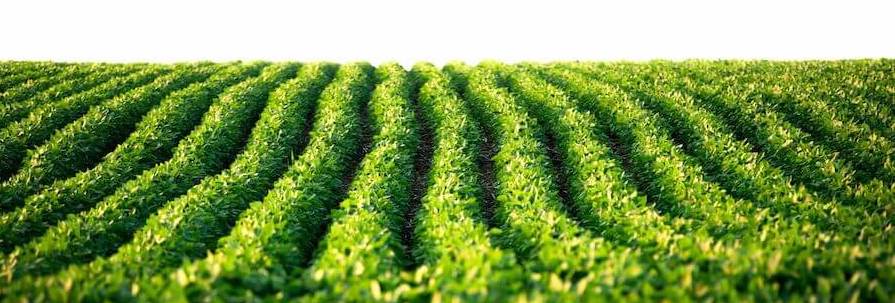
Land Use
Soy Milk
Soybeans are hardy legumes that can grow in various climates and conditions. While about 35% of the global soy production is from the US, the high demand for soy has led to deforestation in the Amazon rainforest. However, most soy crops are used to feed livestock and produce fuel, not for humans to consume. If you would like to avoid purchasing soy milk that contributes to deforestation in the Amazon, look for organic soy milk grown in the US or Canada.
Oat Milk
Like soybeans, oats thrive in a wide range of temperatures and are grown all over the US. This means more people have access to locally grown oats, reducing the distance the grain travels from the field to the consumer.
The benefits of oats are not limited to your kitchen table! Growing them as a “break crop” can help the soil and the environment. They help to suppress weeds and hold the soil together. Farmers can plant oats in between other, more temperamental crops to benefit the soil and still produce a successful yield.
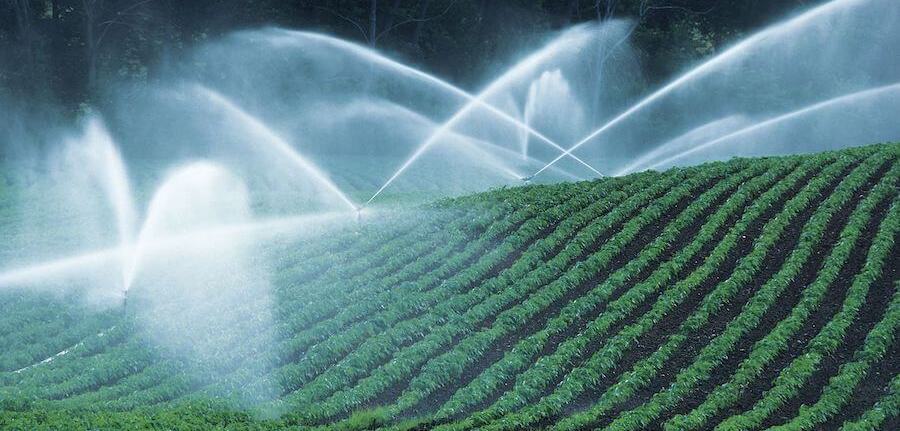
Water Use
Soy Milk
Soy milk production uses an excessive amount of water compared to other alt-milks. For every 1 gallon produced, there is usually about 450 – 700 mm of water needed per growing cycle.
After the soybeans are grown and harvested, more water is needed to turn them into soy milk. An estimated 297 gallons of water is needed to produce 1 gallon of soy milk.
This means that not only will you consume more calories per glass (which can add up quickly), but your diet may also have a higher carbon footprint than it would if you were consuming other plant-based milks.
Oat Milk
Various oats require varying amounts of water to make oat milk, but rolled oats are the most common. Oats are one of the most efficient crops when it comes to water use. According to The Food and Agriculture Organization of the United Nations, oats require only 450 – 650 mm per growing cycle, or about a third as much compared with other crops. This is partly because they can grow in cooler temperatures when the water doesn’t evaporate as much.
Turning oats into oat milk requires an estimated 48 gallons of water to produce 1 gallon of milk according to the Columbia Climate School. This is much less than soy milk!
Approximate Values Of Seasonal Crop Water Needs
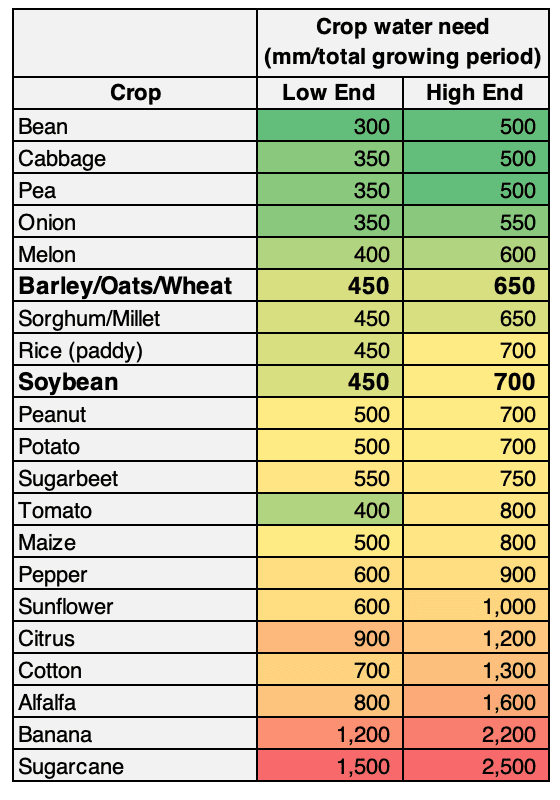
Findings: Oat milk uses less water than soy milk
Greenhouse Gas Emissions
As you can see in the chart below, cow milk has the highest carbon footprint of the beverages compared. Both soy and oat milk are much lower compared to dairy milk, but oat milk has a 12% lower carbon footprint than soy.
Carbon Footprint By Glass (250ml)
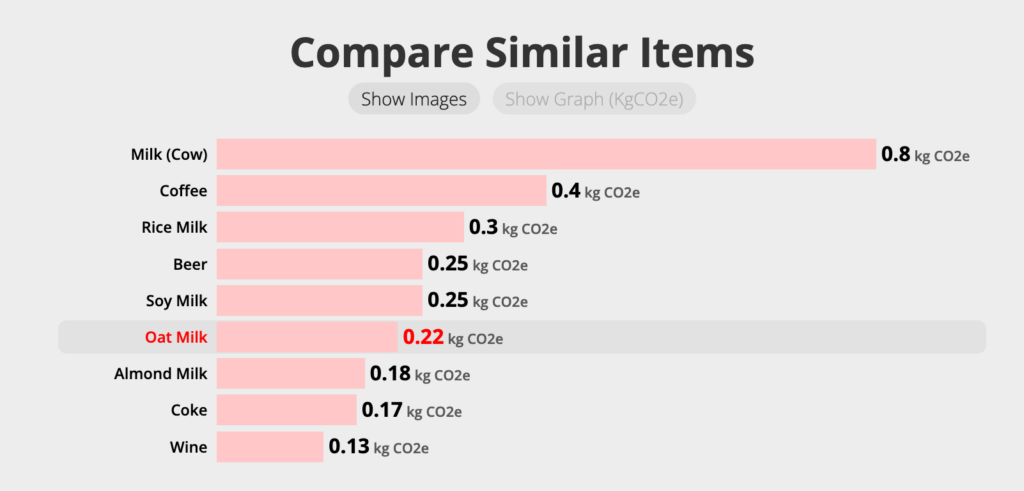
Soy Milk
Because of its low emissions compared to other dairy options, soy milk is often thought of as environmentally friendlier. However, it’s not quite that simple. The production process uses space taken up by cutting down trees that would have absorbed carbon dioxide in the area if they had been left standing.
Soy Milk Carbon Footprint: 0.25kg CO2e
Oat Milk
The low carbon footprint of oat milk is a significant selling point, and it’s arguably the most sustainable option for those looking to cut down on their environmental impact. Oat milk uses fewer resources than other types of dairy farming, such as cow or soy production methods – which require fertilizers made from natural gas-based guanos. Additionally, many manufacturers choose to send the byproduct, oat pulp, to farms to be used as livestock feed instead of sending it to landfill.
Oat Milk Carbon Footprint: 0.22kg CO2e
Findings: Oat milk has a smaller carbon footprint than soy milk
Oat Milk vs. Soy Milk Environmental Impact At A Glance
| Environmental Impact | Soy Milk | Oat Milk |
|---|---|---|
| Water Use (per gallon to produce) | 297 gallons | 48 gallons |
| Greenhouse Gas Emissions (per 200 milliliter glass produced) | 0.195kg of carbon dioxide | 0.18kg of carbon dioxide |
| Total Carbon Footprint | 0.25kg CO2e | 0.22kg CO2e |
Conclusion: Oat Milk Is Better For The Environment Than Soy Milk
So, if you’re looking for an environmentally friendly milk alternative that still tastes great, oat milk is your best bet. Keep in mind that other plant-based milk types also have unique environmental impacts. For a comparison of the most popular dairy-free milks, check out this article and find the option that best suits your needs (and taste buds!). Switching from cow’s milk to a non-dairy option is excellent for both you and the planet!
Recent Posts
The Rise of Plant-based Milk Alternatives As more people adopt plant-based diets for ethical, health, and environmental reasons, the demand for vegan milk alternatives is on the rise. With various...

